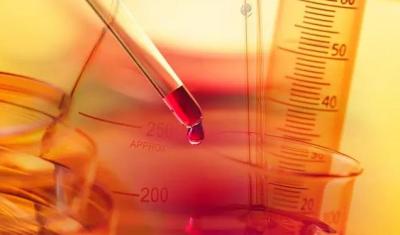Poor color fastness of reactive dyes is generally related to the incomplete cleaning after printing and dyeing. However, consumers have higher requirements on the color fastness of reactive dyes. This article will discuss the economical and effective solution to the problems of anti-staining soaping.
Problems of Anti-staining Soaping
Because reactive dyes have the advantages of complete chromatography, easy color matching, bright color, low price, simple process and good color fastness, reactive dyes are widely used in the printing and dyeing of cellulose and other fibers. Dyeing and printing with reactive dyes has occupied a considerable proportion.
In the dyeing process, there are many dyes, hydrolyzed dyes, alkalis and other chemical substances in the dye liquor, which must be washed and soaped several times to remove these impurities and improve the brightness, color fastness and cleanliness of the fabrics, so as to meet the requirements of products.
There are about 30% unfixed dyes in reactive dye printing. They must be washed off the fabric with the printing paste. The waste water will still be contaminated on the printed fabric, which will reduce the dyeing fastness at the patterned place and contaminate the white background parts. Therefore, it is necessary to choose a suitable detergent. The anti-staining detergent can thoroughly wash off the dirt, so that all the washed dirt will no longer contaminate the fabric.
Reactive dyes have developed rapidly. Through years of hard work by scientists and technicians at home and abroad, various application technologies, production management, dye wastewater control and treatment technologies of reactive dyes have been continuously developed. This article will focus on the anti-staining soaping process in the printing and dyeing process of reactive dyes.
1. Research Trend of Anti-staining Soaping of Reactive Dyes
Reactive dyes contain one or more reactive groups with various kinds and chemical structures, so the reaction efficiency is different. However, these different types of reactive dyes have one thing in common, which is that they cannot completely react with cellulose fibers during dyeing.
After printing, dyeing and steaming, the fiber contains:
A. Reactive dyes which have been reacted and combined;
B. Unfixed reactive dyes;
C. Hydrolyzed dyes produced by the action of alkali (acid) and water;
D. Residual additives.
They are related to PH value, temperature and time during dyeing, which can be solved by soaping.
In high-temperature alkaline dyeing bath and washing bath, it is easy for reactive dyes to break bonds due to unstable fiber bonds. Dyes themselves will also hydrolyze. Because the hydrolyzed dyes have great affinity, it is easy to cause the problems of dye re-contamination.
Unfixed dyes or hydrolyzed dyes are generally difficult to clean, which easily leads to problems such as bleeding, white background contamination, re-contamination, poor wet fastness and washing fastness. Therefore, the soaping agent for cleaning reactive dyes must have strong washing power and strong function of preventing re-contamination.
The research on soaping technology of reactive dyes is very active at home and abroad. Technicians usually use a simulation device to process according to the formal production flow, and then test the dye content, hot and cold cleaning temperature, time and speed, and analyze the relationship between various influencing factors and dye (floating color) removal rate.
Recent research hotspots:
1) Saving energy, water and time;
2) Reasonable and simple production process and operation (such as low liquor ratio short-time cleaning);
3) Low cost;
4) Reducing wastewater, rationalizing environmental protection, etc.
According to Luttringer's research, the wash ability caused by the temperature difference between monofunctional and bifunctional reactive dyes during continuous soaping treatment is different. Unfixed dyes and hydrolyzed dyes with high affinity should be rinsed with hot water. PH value, salt concentration and flow ratio are closely related to soaping effect. Aspland's research suggests that when washing high affinity components, it is best to wash with hot water, but it will cause hue change.
Improper temperature or PH value will cause hydrolysis reaction. Thomsen thought that 50% of hydrolyzed dyes with high affinity were eluted when rinsed at high temperature (95 ~ 70℃). According to the research of G.L.Bhalla, the nucleophilic substitution reaction of two molecules resulted in the alkaline hydrolysis of dyes, rearrangement reaction of dyes and partial bonding phenomenon during alkaline soaping. The research of Xiaogu et al. expounded the best washing conditions and application technology of soaping agent with anti-staining performance. All these studies provide a basis for the development of soaping agents with anti-staining properties of reactive dyes.
2. The Functions of Anti-stain Soaping Agents
After dyeing or printing with reactive dyes, the fabrics must be washed with water and soap to remove floating colors, pastes and auxiliaries. The anti-staining agent has the following functions:
A. After washing, it has a directional adsorption effect on the floating color of the fabric surface;
B. It can infiltrate between unfixed dye and fiber by reducing interfacial tension and weaken the adhesion of unfixed dye on fiber;
C. It can make unfixed dye fall off the fiber by mechanical action;
D. If the affinity between anti-staining agent and floating dye is greater than that of fiber and with colloid property, the anti-staining agent can disperse floating dye falling off fiber in water washing solution to form a stable suspension dispersion system;
E. The strong complexing and dispersing power of the anti-staining agent makes the floating dye disperse in the washing liquid without re-staining the fiber;
F. The weak cation of the anti-staining agent is combined with the floating dye anion, so that the floating dye does not re-stain the fiber;
G. The fabric after anti-staining treatment has excellent anti-staining ability and the fastness of color.



 English
English  日本語
日本語  Español
Español  tiếng việt
tiếng việt  Türkçe
Türkçe  ไทย
ไทย  українська
українська  हिंदी
हिंदी  বাঙালি
বাঙালি  اردو
اردو 

